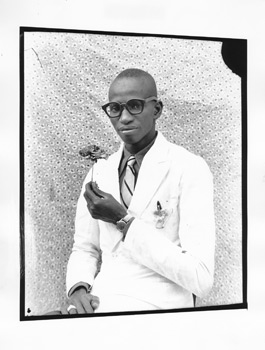
The Walther Collection 526 West 26th Street, Suite 718 10001 New York États-Unis
The Walther Collection opens in June 2010 with "Events of the Self: Portraiture and Social Identity," introducing works from its African collection. Under the curatorial direction of Okwui Enwezor the exhibition comprises a series of four projects filling all nine galleries in the three buildings of the new exhibition space in Burlafingen near Ulm, Southern Germany. It integrates the work of three generations of African artists and photographers with that of modern and contemporary German photography. This combination of African and German works will serve as a model for the kind of curatorial process that animates the character of the collecting program.
To support this curatorial vision, the galleries of the collection have been proportioned to respond to the different scales of photography and video and are distributed around three architectural typologies which house the exhibitions.
In The White Box a group exhibition of contemporary African artists working with photography, video installation, and slide projection will be on display: The works of artists like Yto Barrada, Romuald Hazoumé, Jo Ractliffe, Guy Tillim, Hentie van der Merwe or Samuel Fosso are organized around the issues of portraiture, portrayal, gender, performance, theatricality, and identity. A second floor gallery is dedicated to the work of Rotimi Fani-Kayode, showing a selection of the large color photographs of the late Nigerian-British artist, whose staged portraits of the 1980s explored issues of sexuality, eroticism, and identity.
A dual exhibition in The Green House focuses on portraiture and the idea of societal transition and social transformation. It features the magisterial and influential portraits of two great modern masters: Seydou Keïta (Mali) and August Sander (Germany) and thus presents two contrasting moments of the twentieth century along with the cultural implications of photography in showing the changes these societies were undergoing while the portraits were being made. In both portrait series, the poses and gestures that the sitters adopt in front of the camera suggest the idea of the modern individual.
The Black House presents similar correspondences in the concepts of seriality and typologies in the works of Bernd and Hilla Becher (Germany), Malick Sidibé (Mali), and J. D. 'Okhai Ojeikere (Nigeria). Small selections from the series of black-and-white pictures of obsolete modern machinery by the Bechers, along with the severe black-and-white headshots by Ojeikere, in which he analyzes the subjects' hairstyles, and Sidibé's studio portraits of women and men photographed from the back, all provide a complement of both intuitive and formal approaches in the work of this generation of artists.
These correspondences are further developed in the work The Black Photo Album: 1890 – 1950 by Santu Mofokeng. His presentation of found images from the beginning of the twentieth century give a very different representation of South Africans than the work of Alfred Martin Duggan-Cronin in his ten books on photographic studies of the Bantu tribes, which are also part of this collection.
Steidl will publish a comprehensive exhibition catalog with full-page reproductions of all works in the exhibition, marking the starting point of the publication program at The Walther Collection. The book will be edited by Okwui Enwezor and will include contributions by himself as well as Virginia Heckert, Kobena Mercer, Chika Okeke-Agulu, Gabriele Conrath-Scholl, Deborah Willis and a conversation between Willis E. Hartshorn, director of the International Center of Photography (ICP) in New York, and Artur Walther.

